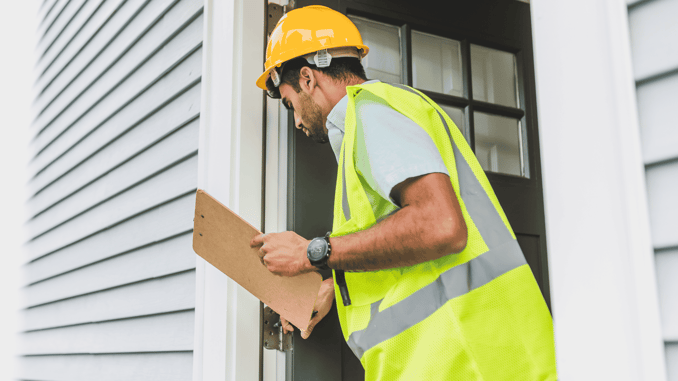Home Appraisals in Texas: What Homebuyers Need to Know
 Author: Michael Bernstein
Author: Michael BernsteinPublished:
Before your mortgage is approved, there’s one important step that can make or break your home purchase: the appraisal. Whether you're buying a house in Austin, a condo in Dallas, or a ranch outside Houston, lenders need to verify that the property is worth what you're paying.
This guide will walk you through exactly how appraisals work in Texas—including how they're calculated, how much they cost, how long they take, and what to do if the value comes in too low. We’ll also explain the difference between appraisal waivers and contingency waivers, and why working with a mortgage broker gives you more flexibility.

What Is a Home Appraisal?
A home appraisal is an independent estimate of a property's fair market value, typically conducted by a state-licensed appraiser. Most mortgage lenders require an appraisal to ensure they’re not lending more than the home is worth. If you’re buying a home in Texas, expect an appraisal before your loan can be finalized.
Why Is an Appraisal Required?
Appraisals primarily protect the lender. If you default on the loan, the lender wants confidence the home can be resold for at least the outstanding loan balance. But buyers benefit too—an appraisal can confirm you’re not overpaying in today’s market.
That said, not every buyer is required to get a traditional appraisal. Appraisal waivers are an increasingly common option for borrowers who meet specific criteria. Rather than having a licensed appraiser conduct a full property visit, the lender uses recent comparable sales data, public records, and past valuations to confirm the home's market value through automated underwriting.
Appraisal waivers are typically available if:
- You're putting at least 20% down on a conventional conforming loan
- The property was recently appraised and hasn’t materially changed
- There is sufficient local sales data to support an accurate automated value
In some cases, borrowers with as little as 3%–5% down may still qualify for a waiver, especially if purchasing in high-needs rural areas identified by the FHFA.
Benefits of getting a waiver: saving $600–$1,000 in appraisal fees (with the average around $700), closing faster, and reducing documentation, headache, and stress.
However, skipping the in-person evaluation does come with risks—such as overpaying for a property with hidden issues or limiting future refinancing flexibility if the true value is lower than estimated. That said, most major defects should be caught during your home inspection. Just make sure your realtor did a proper comparative market analysis before making an offer to ensure your price aligns with recent neighborhood closings.
An appraisal waiver is NOT the same as waiving the appraisal contingency in your contract. With an appraisal waiver, the lender may still approve your loan without a formal in-person valuation. But if you waive the appraisal contingency in your purchase contract, you're agreeing to move forward with the purchase—even if the appraisal comes in low. That could mean bringing additional cash to closing or losing your leverage to renegotiate the price. Always review this carefully with your agent and lender..
How Is a Home’s Appraised Value Calculated?
Appraisers use one or more of the following approaches:
- Sales Comparison Approach: Compares your home to recently sold properties nearby (comps) that are similar in size, condition, and location. This is the most common method for residential homes.
- Cost Approach: Calculates how much it would cost to rebuild the property today, subtracts depreciation, and adds land value.
- Income Approach: Used for investment properties—estimates value based on potential rental income.
The appraiser will also assess:
- Home’s square footage, layout, and functionality
- Age and condition of major systems (roof, HVAC, plumbing)
- Lot size, location, and amenities
- Recent upgrades (like a remodeled kitchen or added bathroom)
- Curb appeal and overall presentation
But keep in mind: appraisals often don’t give full value to certain high-cost improvements or custom touches. For example, excessive or exotic landscaping—like rare trees or elaborate garden features—rarely moves the needle on appraised value. Similarly, luxury custom upgrades, like imported marble countertops or commercial-grade appliances, might not add as much value as they cost if comparable homes in your neighborhood don’t feature similar finishes.
Appraisers focus on what buyers in your market are actually paying for—not how much you spent. So if you paid top dollar for a home because of high-end upgrades, there’s a chance the appraisal might come in lower than expected. This is why choosing upgrades that align with local expectations is usually smarter than going over the top.
How Much Does a Home Appraisal Cost in Texas?
Appraisals typically cost $600–$1,000 for a single-family home in Texas, with the average hovering around $700. On high-end or complex properties—especially those priced over $1.5 million—costs can climb as high as $1,700.
Fees depend on several factors:
- Property size and complexity
- Location (rural appraisals often cost more)
- Loan type (VA and FHA appraisals require more documentation)
- Whether a full interior inspection is required
- Purchase price (jumbo loans or properties over $1 million often incur higher fees due to added lender scrutiny)
How Long Does an Appraisal Take?
The total timeline for an appraisal usually spans about 1.5-2 weeks, but it can vary significantly depending on your location, property type, and the appraiser's availability.
- Scheduling: After the appraisal is ordered by your lender, most appraisers are able to schedule the visit within 48 hours, though in rural areas, it may take longer to coordinate due to limited appraiser availability.
- On-site Visit: The appraiser's property visit typically lasts 30 minutes to a few hours, depending on the home's size, condition, and layout.
- Final Report: After gathering data and reviewing comparable sales, the appraiser usually submits the report within 5 to 10 business days. Delays are more common with complex properties, large homes, or transactions involving unique features or acreage.
For homes in remote parts of Texas—or for non-standard properties like ranches or custom builds—expect the process to take longer. It's a good idea to factor in extra time for the appraisal stage when negotiating your contract timeline
Know the Difference: VA vs. Conventional vs. Jumbo Appraisal Requirements In Texas
When getting a home loan in Texas, the type of mortgage you choose—VA, conventional, or jumbo—can significantly affect your appraisal experience. Each loan program has its own rules about who can perform the appraisal, what the appraiser must evaluate, and how fast the process moves.
- VA Appraisals: Must meet the Department of Veterans Affairs’ Minimum Property Requirements (MPRs), which go beyond market value to assess habitability and safety. The home must be structurally sound, free of hazards, and have adequate utilities and systems in working order. VA appraisals are ordered through the VA’s centralized panel, which can add extra time to the process—especially in rural areas. They also include a Notice of Value (NOV), which determines the maximum loan amount for the buyer.
- FHA Appraisals: Similar in nature to VA appraisals, FHA appraisals emphasize livability and safety, including things like functioning smoke detectors, handrails on stairs, and absence of chipped paint on older homes (due to lead risks). FHA appraisals can also require repairs before the loan can be approved.
- Conventional Appraisals: Offer more flexibility and are generally focused on market value, not property condition. Cosmetic issues typically don’t require correction unless they pose a health or safety risk. This makes conventional loans easier to work with for homes that need minor updates or repairs.
- Jumbo Loan Appraisals: Because jumbo loans exceed conforming loan limits, lenders often require additional due diligence. This can include two appraisals on high-value homes, longer review times, and stricter scrutiny of comps—especially for custom or non-standard properties. Appraisal costs and turnaround times tend to be higher and slower on these transactions.
Does Property Type Matter? (House vs Condo vs Ranch)
Absolutely. Appraisers evaluate different property types based on unique factors:
- Single-Family Homes: Valued based on condition, comparable recent sales, size, layout, and lot characteristics. These are the most common appraisal types and are relatively straightforward when there are strong neighborhood comps.
- Condos: In addition to evaluating the specific unit, appraisers must consider the overall health of the condo association, shared amenities, and the number of units that are owner-occupied versus rented. If there are lawsuits, deferred maintenance, or high HOA delinquency rates, it can impact the appraised value—and even loan eligibility.
- Ranch Properties: These are often more complex. Appraisers may need to assess large parcels of land, conduct boundary or survey reviews, and account for agricultural exemptions, grazing rights, and zoning regulations. Improvements like fencing, barns, or irrigation systems can also play a role. Because rural comps are fewer and farther between, appraisal timelines and costs are typically higher for ranch-style properties.
In short, the type of property you’re buying can significantly affect the appraisal scope, timeline, and final valuation—especially in a diverse state like Texas.
What Happens After the Appraisal?
It’s important to understand how the appraisal outcome affects your financing—especially when it comes in below your offer price. Lenders determine your loan amount based on the lower of the appraised value or the purchase price. This protects the lender by ensuring they’re not over-lending relative to the home’s true market value.
Depending on your down payment structure, a low appraisal doesn’t always mean you’ll need to bring more cash. If you’re putting more than the minimum down, the extra funds can often absorb the gap—but it may affect your loan-to-value (LTV) ratio, interest rate, or mortgage insurance costs. Your lender will walk you through the exact impact.
If you waived your appraisal contingency, however, you’ve lost the opportunity to renegotiate with the seller. That means you must either bring in the difference in cash or walk away and risk losing your earnest money deposit.
There are three typical outcomes:
- Appraisal matches or exceeds purchase price
✅ Great news—you move forward with your loan as planned. - Appraisal comes in low
❌ This can trigger problems:- The lender won’t finance more than the appraised value.
- You may need to:
- Renegotiate the purchase price
- Increase your down payment
- Challenge the appraisal with additional comps
- Appraisal comes in high
🎉 You just gained instant equity. This can:- Improve your loan-to-value (LTV) ratio
- Potentially eliminate mortgage insurance (PMI)
- Make refinancing easier in the future
How to Deal with a Low Appraisal
- Appeal the report: If the appraiser used bad comps or missed key upgrades, your lender can submit a Reconsideration of Value (ROV). That said, challenging an appraisal is rarely successful unless there are glaring factual errors or truly better comps available.
- Order a second appraisal: This is only an option when you're working with a mortgage broker, like LendFriend. Most direct lenders and big banks won’t allow a second opinion unless the original appraisal is deemed unusable.
- Negotiate: If the appraisal comes in low and you still have your appraisal contingency in place, you can try to renegotiate the purchase price with the seller. Often, sellers will agree to lower the price or meet halfway to save the deal—especially if the comps support your case.
- Bring cash: If the lender reduces your loan amount due to a lower appraised value, you can cover the difference out of pocket. Whether this means increasing your total down payment or shifting how it's applied depends on your original loan structure. If you were putting more than the minimum down, you may not need to increase your out-of-pocket costs at all—but your loan terms could shift slightly depending on your new loan-to-value ratio.
- Switch lenders: Rare, but possible if you suspect bias or major error. If you’re working with a mortgage broker, you won’t need to start over from scratch. Brokers like LendFriend can simply move your file to a different lender and order a new appraisal when necessary—something most banks and direct lenders don’t allow.
Can I See the Appraisal?
Yes. You are legally entitled to a copy of the appraisal once it’s complete, typically bundled with your closing disclosures. Review it for errors in address, square footage, or missed upgrades.
Tips to Get the Highest Appraised Value (If You're Refinancing or Selling)
- Declutter and deep clean the home
- Provide a list of major upgrades with dates and costs
- Boost curb appeal (trim landscaping, fresh paint, etc.)
- Fix obvious maintenance issues (leaky faucets, missing fixtures)
- Offer comps or multiple offers (if you’re a seller)
Final Thoughts: Why It Pays to Work With a Mortgage Broker
Appraisals aren’t just a box to check—they can make or break your deal. A good mortgage broker in Texas, like LendFriend Mortgage, can guide you through the process, prepare you for what’s coming, and even help you dispute a bad appraisal when needed.
We work with lenders that offer flexible underwriting and appraisal waiver options—and we’re always one step ahead of issues that could slow your deal down.
Have a question? Give us a call at 512.881.5099 or get in touch with me by completing this quick form, and I'll reach out as soon as possible.

About the Author:
Michael Bernstein